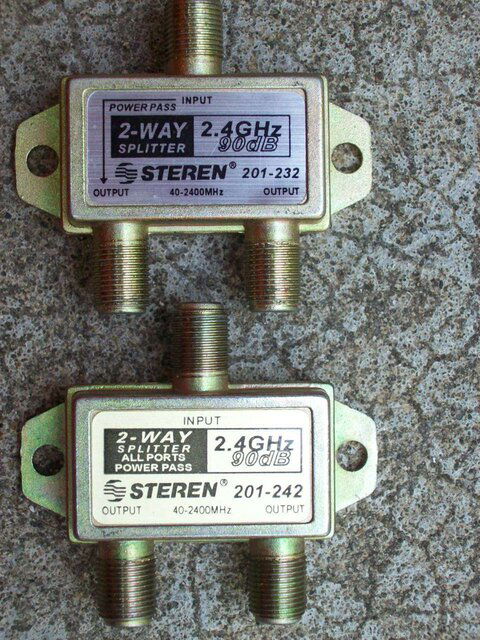I purchased a hand full of splitters on ebay from a seller by the name of palmpdb.

The one on the top is one port pass. It will pass voltage from the in port to the out port in the direction of the arrow. It will also pass voltage from that same out port to the in port backwards from the arrow. It will not pass voltage from the in port to the other out port in either direction. OK... as I expect.
The one on the bottom is an all port pass. It will not pass any voltage from the in port to either of the outs ports. It will pass voltage from both out ports to the in port. NOT...as I expect.
Before I go on a rant, Do you think this is normal for the "splitter" as it is labeled?

The one on the top is one port pass. It will pass voltage from the in port to the out port in the direction of the arrow. It will also pass voltage from that same out port to the in port backwards from the arrow. It will not pass voltage from the in port to the other out port in either direction. OK... as I expect.
The one on the bottom is an all port pass. It will not pass any voltage from the in port to either of the outs ports. It will pass voltage from both out ports to the in port. NOT...as I expect.
Before I go on a rant, Do you think this is normal for the "splitter" as it is labeled?

